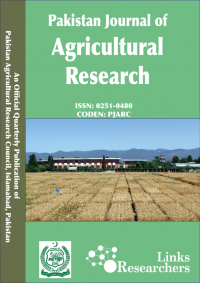PRODUCTIVITY IN RICE-WHEAT CROP ROTATION OF PUNJAB: AN APPLICATION OF TYPICAL FARM METHODOLOGY
Imtiaz Hussain*, Hassnain Shah, M. Azeem Khan, Waqar Akhtar**, Abdul Majid*** and M. Yaqub Mujahid*
Corresponding author:izhussain@yahoo.com
ABSTRACT
Rice-wheat cropping is among one of the most extensive systems in Pakistan and nearly three-fifth of this area falls in the Punjab province. The continuous sequential cropping has observed problem of stagnation of the rice-wheat productivity. The rational thinking urges to diagnose the problems of the area explaining the cause and effect scenario of the system. Descriptive analysis is conducted on the data collected from 29 representative farms, from 10 Tehsils of four districts of rice-wheat in Punjab having 1-68 ha farm size selected through purposive random sampling applying typical farm methodology. Rice is cultivated on 87% and fodder on 8% of the total area during kharif while wheat on 75% along with berseem on 14% of total area during rabi season. Almost 81% rice and more than 50 % wheat is harvested with combine followed by burning of residues that not only create environmental pollution but also affect the productivity of the cropping system. Stagnation in yield of rice and wheat is reported mainly due to uninterrupted sequential rice-wheat cropping which cause low fertility, increased weed problem, more disease and insect invasion leading to yield losses. Berseem is the only crop that breaks this rotation. Farmers are aware of the beneficial effects of this crop rotation and believed that this riceberseem rotation control weeds in the next wheat crop along with yield -1 -1 improvement of both rice (upto 5.4 md acre ) and wheat (4.4 md acre ). However there is need to assess the economic impact and evaluation of berseem in rice-wheat cropping system and evaluation of different wheat planting techniques in relation with residue management. These techniques may include farmer practice (partial burning, land preparation and broadcast); partial burning zero tillage ; Farm Machinary Institute seeder (planting with in the residue).
To share on other social networks, click on any share button. What are these?







